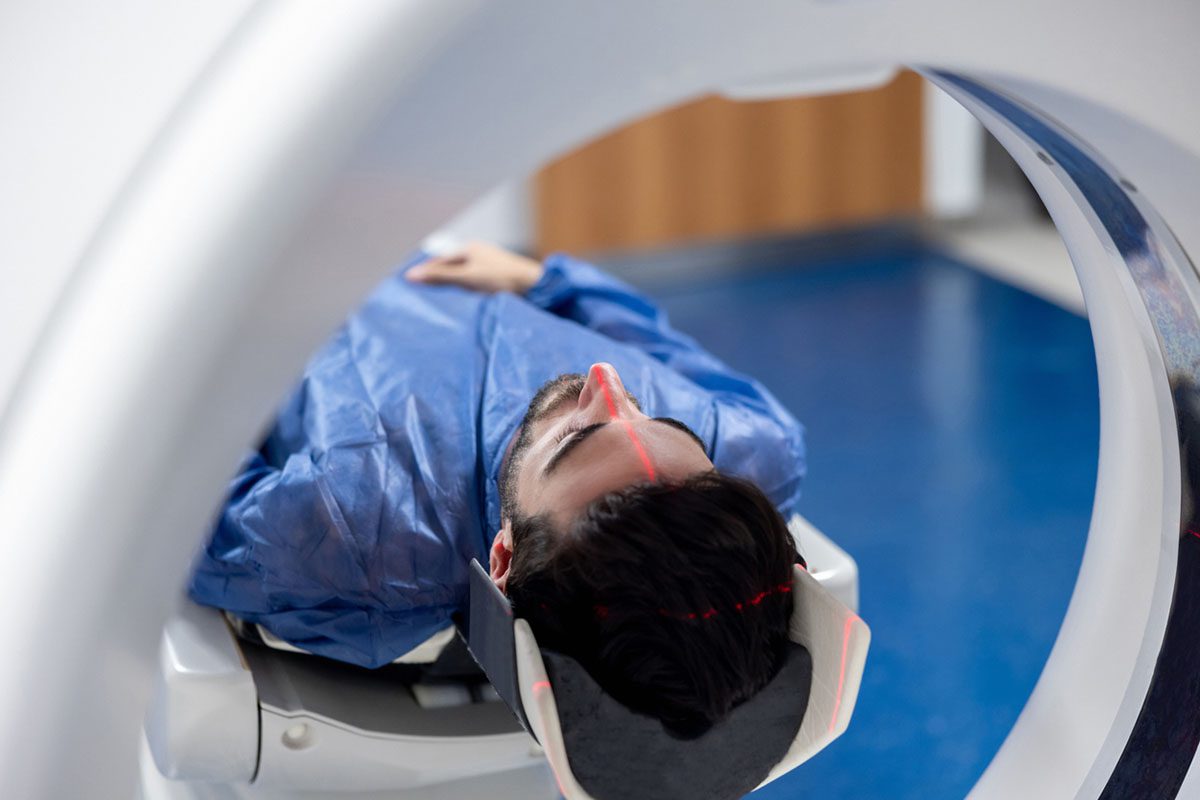
Prim Care Companion CNS Disord 2022;24(3):21cr02997
To cite: Arora S, Jolly AJ, Suhas S, et al. Subacute sclerosing panencephalitis masquerading as schizophrenia: an example of diagnostic overshadowing in neuropsychiatry. Prim Care Companion CNS Disord. 2022;24(3):21cr02997.
To share: https://doi.org/10.4088/PCC.21cr02997
© Copyright 2022 Physicians Postgraduate Press, Inc.
aDepartment of Psychiatry, National Institute of Mental Health and Neurosciences, Bangalore, Karnataka, India
bDepartment of Neurology, National Institute of Mental Health and Neurosciences, Bangalore, Karnataka, India
*Corresponding author: Rashmi Arasappa, MD, Department of Psychiatry, National Institute of Mental Health and Neurosciences, Hosur Rd, Bangalore, India ([email protected]).
Diagnostic overshadowing is the process by which physical symptoms in individuals with mental illness are misattributed to their mental illness.1 We present the case of a young man who suffered from an illness for 3 years, which was characterized by psychotic symptoms, severe cognitive decline, and myoclonic jerks that were misattributed to mental illness and later diagnosed as subacute sclerosing panencephalitis.
CASE REPORT
Mr A, a 19-year-old man, presented to the hospital with an insidious onset illness of 3 years’ duration characterized initially by apathy, personality change, and significant academic decline. Subsequently, he experienced elementary auditory and tactile hallucinations and periodic sudden jerky movements of his right upper limb, which gradually progressed to involve both the upper and lower limbs and worsened over the next 6 months. This was followed by gait disturbance, intention tremors of hands, and significant cognitive decline. His symptoms were attributed to schizophrenia, and he was tried on multiple antipsychotics with minimal response, following which he was referred to our center.
Upon evaluation, it was noted that the patient had an incomplete vaccination schedule and history of an exanthematous febrile illness at 7 years of age. Neurologic examination revealed a bilateral downward gaze palsy with slow saccades and the presence of frontal release signs. Motor system examination showed cogwheel rigidity and bilaterally exaggerated deep tendon reflexes in the upper and lower limbs with a bilateral flexor plantar response. Sudden, brief, shock-like, nonrhythmic, jerky involuntary movements lasting for a few seconds and predominantly affecting the upper limbs and trunk with blinking of the eyes were observed during physical examination. This was suggestive of slow (subcortical) myoclonus. These movements were present both at rest and during voluntary movement and were sensitive to tactile and auditory stimulus. He also had bilateral intention tremor of the hands and a slow gait with decreased arm swing. On mental status examination, he reported the same auditory and tactile hallucinations described earlier. Evaluation of cognitive functions revealed significant impairment of complex attention, executive function, perceptual-motor abilities, and language with impaired speech fluency, comprehension, and inability to read and write.
Neurology workup revealed periodic epileptiform discharges on electroencephalography, left occipital lobe gliosis on brain magnetic resonance imaging, and elevated measles virus IgG antibody titer on cerebrospinal fluid examination, confirming a diagnosis of subacute sclerosing panencephalitis. The patient was started on levetiracetam and levodopa for symptomatic management in addition to continuation of aripiprazole for the psychotic symptoms. On telephone follow-up at 6 months, the patient was found to be maintaining these medications with no further deterioration in clinical status.
DISCUSSION
Diagnostic overshadowing refers to the process by which physical symptoms in an individual with mental illness are misattributed to the mental illness, leading to delay in diagnosis and treatment.1,2 Complex presentation, difficulty in communication, stigmatizing attitudes, lack of knowledge about mental illness, time pressure, chaotic environment, and the label of a frequent attendee with medically unexplained symptoms have all been identified as risk factors for diagnostic overshadowing.3,4
The presence of fever, seizures, neurologic deficits, or abnormal movements should alert the psychiatrist to the possibility of neurologic disorders. Atypical features such as atypical age at onset; atypical psychiatric symptom profile; altered states of consciousness; catatonic symptoms; visual, olfactory, tactile, or multimodal hallucinations; delusions of misidentification; severe cognitive impairment; disproportionate weight loss; extreme antipsychotic sensitivity; and lack of treatment response should also merit further evaluation to rule out underlying neurologic disorders.5,6
In conclusion, an unbiased evaluation of psychiatric symptoms and a careful neurologic examination can be key to the correct diagnosis in patients who present with a complex mixture of neurologic and psychiatric symptoms.
Published online: May 12, 2022.
Relevant financial relationships: None.
Funding/support: None.
Patient consent: Informed consent was received from the patient, and information has been de-identified to protect anonymity.
References (6)

- Jones S, Howard L, Thornicroft G. ‘Diagnostic overshadowing’: worse physical health care for people with mental illness. Acta Psychiatr Scand. 2008;118(3):169–171. PubMed CrossRef
- Reiss S, Levitan GW, Szyszko J. Emotional disturbance and mental retardation: diagnostic overshadowing. Am J Ment Defic. 1982;86(6):567–574. PubMed
- Shefer G, Henderson C, Howard LM, et al. Diagnostic overshadowing and other challenges involved in the diagnostic process of patients with mental illness who present in emergency departments with physical symptoms: a qualitative study. PLoS One. 2014;9(11):e111682. PubMed CrossRef
- van Nieuwenhuizen A, Henderson C, Kassam A, et al. Emergency department staff views and experiences on diagnostic overshadowing related to people with mental illness. Epidemiol Psychiatr Sci. 2013;22(3):255–262. PubMed CrossRef
- Keshavan MS, Kaneko Y. Secondary psychoses: an update. World Psychiatry. 2013;12(1):4–15. PubMed CrossRef
- Freudenreich O. Secondary Schizophrenia. In: Psychotic Disorders A Practical Guide. 2nd ed. Springer International Publishing; 2020:49–67.
Please sign in or purchase this PDF for $40.
Save
Cite



